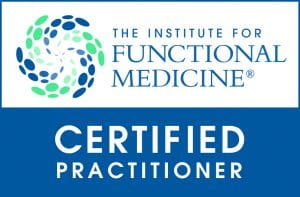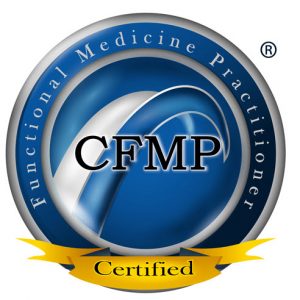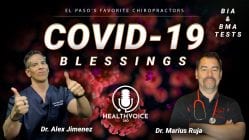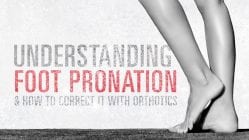Table of Contents
Introduction
Dr. Jimenez, D.C., presents how to find the best diet approach to hypertension and cardiometabolic risk factors in this 2-part series. Many factors often play a role in our health and wellness. In today’s presentation, we will look at how a cardiometabolic diet is personalized for every body type and how genes play with the cardiometabolic diet. Part 2 will continue with how genes play their role in a cardiometabolic diet. We mention our patients to certified medical providers that provide available therapy treatments for individuals suffering from chronic conditions associated with metabolic connections. We encourage each patient when it is appropriate by referring them to associated medical providers based on their diagnosis or needs. We understand and accept that education is a marvelous way when asking our providers’ crucial questions at the patient’s request and acknowledgment. Dr. Alex Jimenez, D.C., uses this information as an educational service. Disclaimer
What Is A Cardiometabolic Diet?
Dr. Alex Jimenez, D.C., presents: Regarding cardiovascular disorders, some terms we look for are: actual heart disease or stroke risk, or they’re on the metabolic side. Insulin, blood sugar, metabolic dysfunction. These words capture the themes we’ve been talking about lipids, glucose, inflammation, and insulin. Those are the people that you’re thinking about for this plan. And what you’re doing is building a lifestyle prescription. And for our patients who have cardiometabolic issues, we’re going to really take advantage of those features of our cardiometabolic food plan and then take them a step further to not only give a low glycemic impact, anti-inflammatory, plant-based kind of nutrient source but then how can we tailor it according to other parameters of this patient and then how can we help this patient implement it when they step outside your office and have to enter into their environment, which may or may not be set up for success.
So first things first. There is a practitioner guide that you must take advantage of, and this is like the scriptures of nutrition, and it has so many resources in here, but of course, they are of use to you once you know about them. So this is going to give you the how-to. So in case you miss something or want more detail, please refer to this practitioner guide for the cardiometabolic food plan. Now, let’s say you want to do the first entry-level use of this food plan. Well, we would grab the one that tells a cardiometabolic food plan. You’ll notice that all these specialized foods are selected to help with cardiometabolic conditions.
Personalizing A Plan
Dr. Alex Jimenez, D.C., presents: And it’s much better than saying, “Hey, eat fewer carbs, eat more plants. You know, eat healthier and exercise more.” That needs to be more specific. So taking it a step further, give them a blank food plan. It doesn’t have to be personalized to another level. Handing them a food plan and telling them to start eating from this list is only sometimes going to work. Sometimes we have to take it a step further to give them food choices in terms of quality and quantity. To that point, you have the ability right now with your patient to guesstimate size and caloric targets.
We can estimate size and weight and put small, medium, and large portions on food consumption. An example will be if we look at the different sizes of body types. For a petite adult body, it is best to ensure they consume about 1200-1400 calories. A medium adult body must consume about 1400-1800 calories, and a large adult body must consume about 1800-2200 calories. That might be the first kind of personalization.
Let’s give you some caloric-guided, quantity-guided food plan options. So what’s beautiful is that we have those already built out, and if you look closely at them, it tells you how many servings of each category should be in each specific small, medium, and large food plan. So you don’t have to do that calculation. Now if you want to take it to the next level and you have a BIA or a bioimpedance analysis machine, you can understand specifically their caloric burn rate and then if you want to modify it. An example would be a 40-year-old male who is unhappy with his weight and has been dealing with issues causing him ankle pain. So let’s see how we can change these things.
As we look at his body index, he is about 245 pounds and has been dealing with some cardiometabolic issues. Now when we look at his numbers and data from the BIA machine, we would develop a food plan that can help dampen the cardiometabolic issues effects that can help him. We would start to calculate come caloric recommendations and have a personalized diet and exercise plan to reduce the symptoms affecting his body and help promote muscle gain and weight loss. This customized plan allows him to keep track of his progress to see what works that is helping him lose weight or what needs improvement. Making these small changes can be beneficial in the long hall, as it will take some time to develop healthy habits.
How To Cater a Cardiometabolic Diet?
Dr. Alex Jimenez, D.C., presents: Now, what do you do with that information and cater it to become a diet for cardiometabolic disorders? Well, you would work with a health coach and other associated medical providers like a nutritionist to pull out a personalized food plan to help your patients understand what’s in each category and how to personalize the servings per day if you decide to get a bit more personalized with the caloric targets. And remember that some MVPs are the most valuable players with super nutrient powers within this food plan. It is also important to make time with the patient to discuss foods that benefit their health and wellness. Remember that this cardiometabolic food plan’s goal is to be able to personalize for unique clinical cases and unique patients. However, it still serves the general need for cardiometabolic food signals for our patients with these issues.
There’s something in here for everybody; remember, you must get started on something. So please consider how you can make this available to your patients so that they have it to a couple of recipes; it’s got menu plans, shopping guides, and recipe indexes. It’s chalked full of the things that slow us down in getting nitty gritty about the cardiometabolic food plan or nutrition in general. Something is always better than nothing. So by starting with the cardiometabolic food plan for your patients, you will start seeing the science be beautifully put into action. We will talk about how to use genetics with diet prescription.
Cardiometabolic Diet & Genes
Dr. Alex Jimenez, D.C., presents: Going a bit deeper, we will discuss how we tailor the cardiometabolic food plan in patients based on their APO-E genotypes. How do we customize it a little bit further? So what is APO-E? APO-E is a class of APO lipoproteins produced in the liver macrophages in astrocytes. It is required for the chylomicrons and IDLs while mediating cholesterol metabolism and is the principal cholesterol carrier in the brain. Now, there are three possible genotypes. There’s APO-E2, APO-E3, and APO-E4. And what happens is you’re going to get one from each parent. So you’re going to end up with a combination at the end. So you’ll be either APO-E3 with APO-E4 or APO-E2 with APO-E3. So based on what you got from your mother and what you got from your father, you’re going to have that combination.
APO-E Explained
Dr. Alex Jimenez, D.C., presents: So APO-E2 two and APO-E3, there’s a lot of information online, but there’s not good evidence on making specific dietary changes in these particular genotypes. So unfortunately, we don’t have the data to confidently say how to modulate, change or customize the food plan based on these genotypes. The best we can tell you is to follow the biomarkers; every patient is an individual. But what about APO-E4? Around 20% of Americans have at least one APO-E4 allele, and if you have APO-E4, you have an increased risk of mild cognitive impairment, Alzheimer’s, hyperlipidemia, diabetes, and coronary heart disease. And if you smoke or drink, you have a worse outcome with this genotype. Interestingly, being relevant to the times increases the risk of infections that can affect your body.
So usually, something helps one thing, but it will, and it can hurt others. So with your patients that you already have their genetics on, this might be a nice way to look at if you know their APO-E4 risk stratified them even more when protecting them. So this was independent of whether they had dementia, underlying cardiovascular disease, or diabetes.
If you have APO-E4, it may be protective against malaria, and who knows what other benefits it would have? An interesting fact about APO-E4 is that, in a study where they tried to give them DHA supplementation, they found it harder to get the DHA in the brain higher with APO-E4. They could elevate it, but not as well as if you had APO-E2 or APO-E3. And this was like supplementing with DHA. Other studies showed that the levels did not respond well if you did DHA and EPA together. So you didn’t get as high of a response of the omega-3s with APO-E4 versus if you had APO-E2 or APO-E3.
How Omega-3 Play Their Role?
Dr. Alex Jimenez, D.C., presents: So the interesting thing, though, is that the study looked at the omegas in the brain that was supplemented with DHA. We have all kinds of new research on the benefit of EPA-only omega-3s; there’s even a main name brand product that is EPA-only. If you look at, if you look to the right, you see that EPA ends up becoming DHA. So if you start increasing, both EPA and DHA will go up. What about APO-E in your diet or the food that you’re consuming? When they looked at genetically modified mice where they took APO-E out, they found extreme hypercholesterolemia with a high-fat food plan.
So when the mice were fed higher fat diets, they had this extreme rise in high cholesterol. Why is this relevant? Because APO-E4 does not function as well as APO-E3 and APO-E2. That hinted that this could affect us if we consumed a higher-fat food plan. So in a U.K. study, they found out that if they gave patients APO-E4 and switched it from saturated fats, they decreased their saturated fats while increasing their lower glycemic index carbohydrates; they found that it lowered their LDL and APO-B. This is a clue that we may want to decrease saturated fats, even healthier saturated fats, in these patients.
So the Berkeley Heart Study from the Berkeley Heart Lab was bought by Quest. It’s now called Cardio iq. It’s one of the original advanced lipid testing labs. And they had an observational study where they saw different effects in these patients with APO-E4 and other products based on various dietary modifications. So what did they find? They found that giving them fish oil lowered their triglycerides, reduced their small density LDL and HDL, and increased their LDL. So their HDL decreased, but the small density LDL went down, and their triglycerides went down.
Disclaimer
General Disclaimer
Professional Scope of Practice *
The information herein on "The Best Diet For Hypertension (Part 1)" is not intended to replace a one-on-one relationship with a qualified health care professional or licensed physician and is not medical advice. We encourage you to make healthcare decisions based on your research and partnership with a qualified healthcare professional.
Blog Information & Scope Discussions
Our information scope is limited to Chiropractic, musculoskeletal, physical medicines, wellness, contributing etiological viscerosomatic disturbances within clinical presentations, associated somatovisceral reflex clinical dynamics, subluxation complexes, sensitive health issues, and/or functional medicine articles, topics, and discussions.
We provide and present clinical collaboration with specialists from various disciplines. Each specialist is governed by their professional scope of practice and their jurisdiction of licensure. We use functional health & wellness protocols to treat and support care for the injuries or disorders of the musculoskeletal system.
Our videos, posts, topics, subjects, and insights cover clinical matters, issues, and topics that relate to and directly or indirectly support our clinical scope of practice.*
Our office has reasonably attempted to provide supportive citations and has identified the relevant research study or studies supporting our posts. We provide copies of supporting research studies available to regulatory boards and the public upon request.
We understand that we cover matters that require an additional explanation of how it may assist in a particular care plan or treatment protocol; therefore, to further discuss the subject matter above, please feel free to ask Dr. Alex Jimenez, DC, or contact us at 915-850-0900.
We are here to help you and your family.
Blessings
Dr. Alex Jimenez DC, MSACP, RN*, CCST, IFMCP*, CIFM*, ATN*
email: coach@elpasofunctionalmedicine.com
Licensed as a Doctor of Chiropractic (DC) in Texas & New Mexico*
Texas DC License # TX5807, New Mexico DC License # NM-DC2182
Licensed as a Registered Nurse (RN*) in Florida
Florida License RN License # RN9617241 (Control No. 3558029)
Compact Status: Multi-State License: Authorized to Practice in 40 States*
Presently Matriculated: ICHS: MSN* FNP (Family Nurse Practitioner Program)
Dr. Alex Jimenez DC, MSACP, RN* CIFM*, IFMCP*, ATN*, CCST
My Digital Business Card

















































